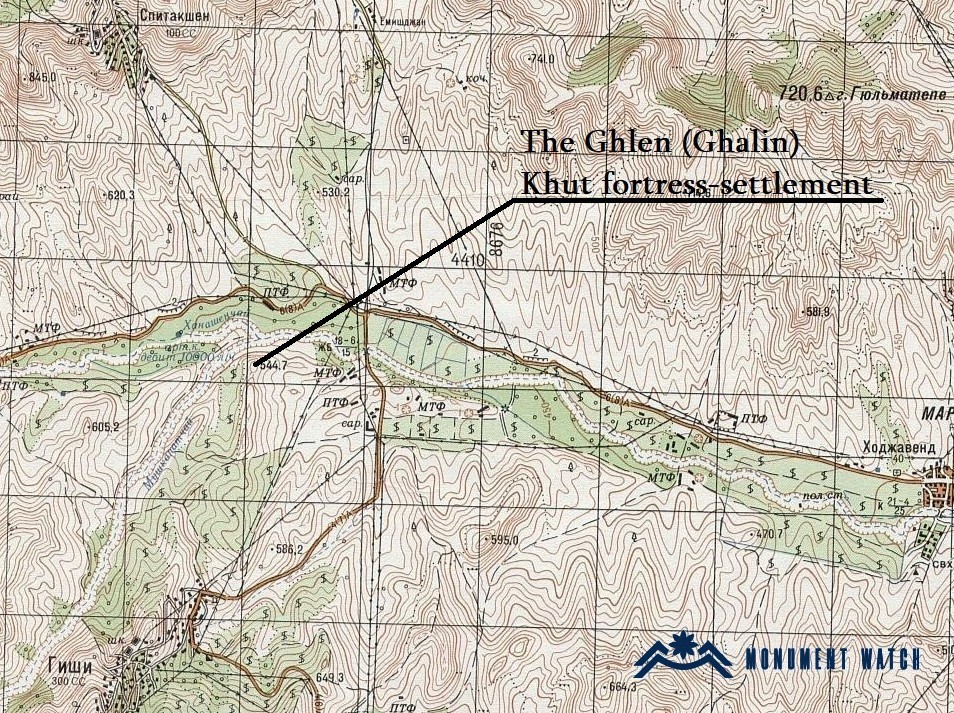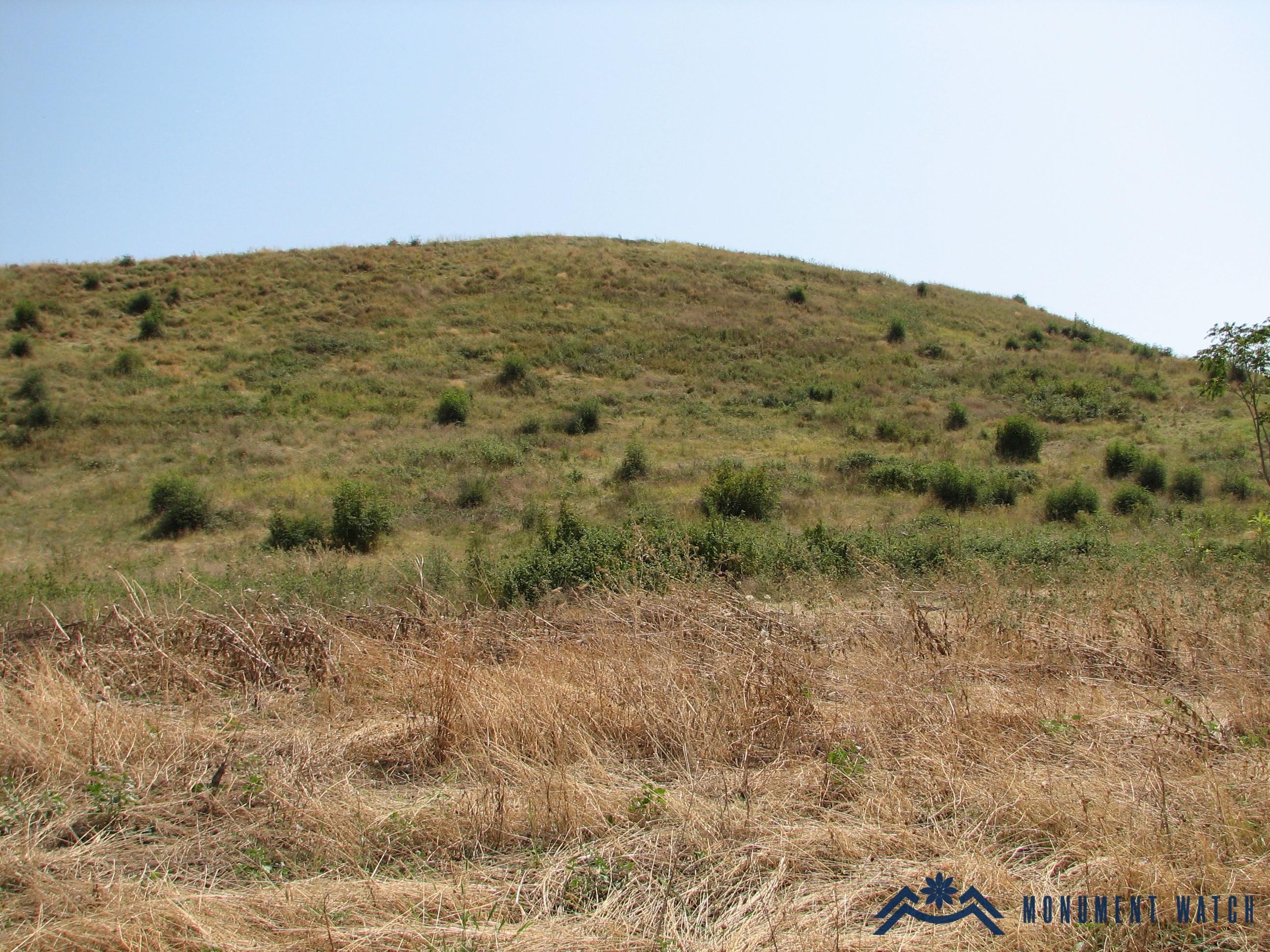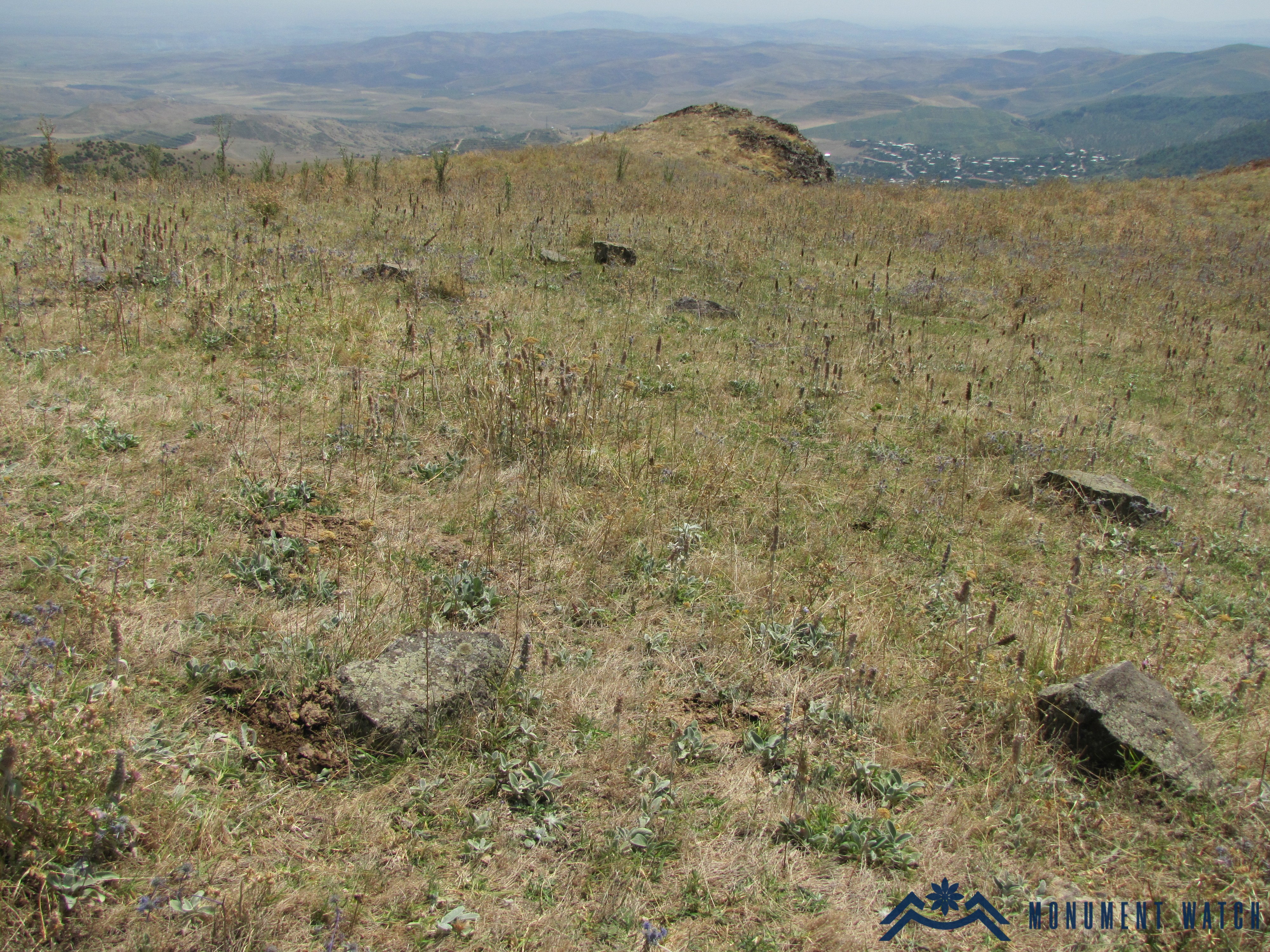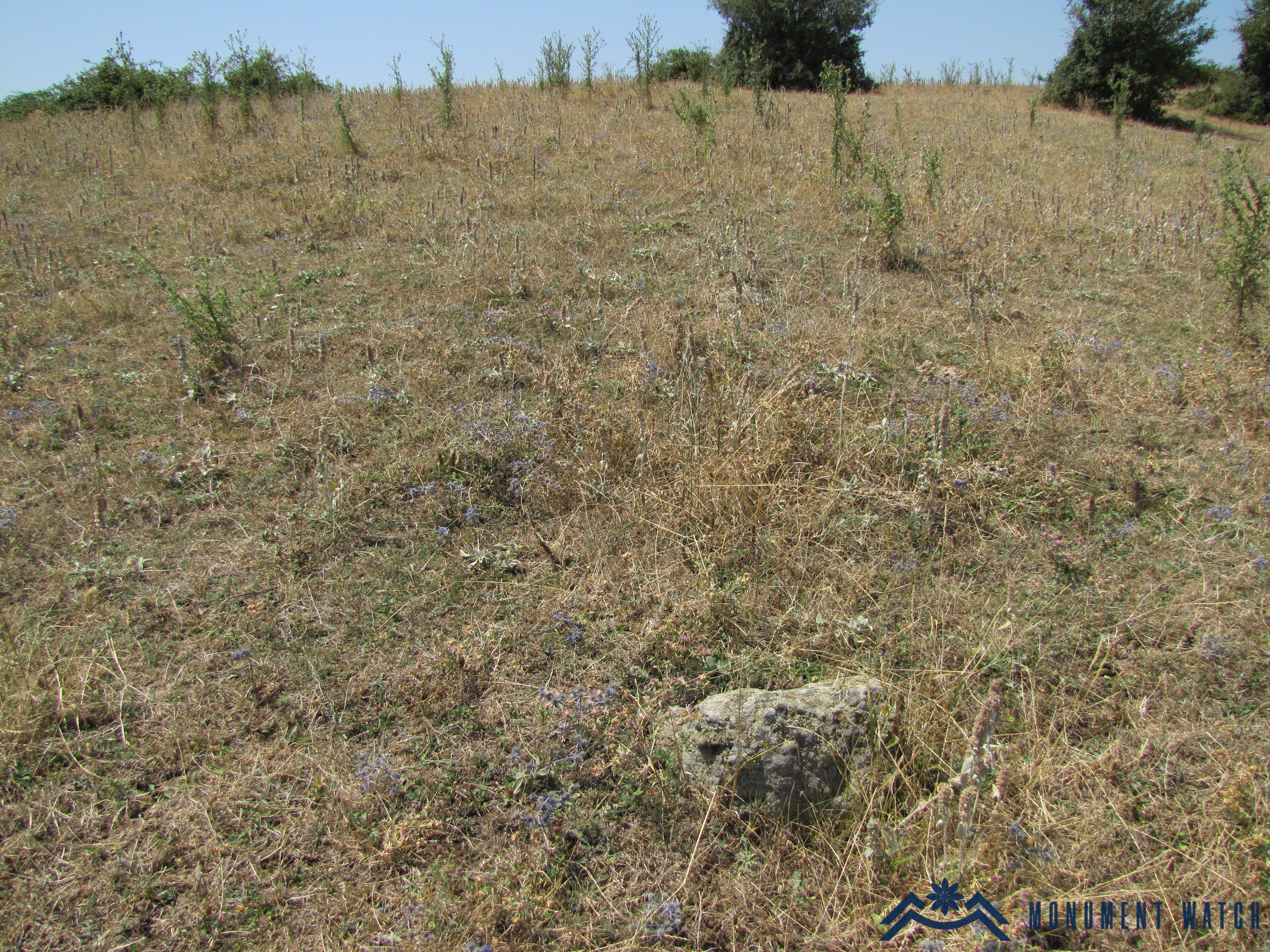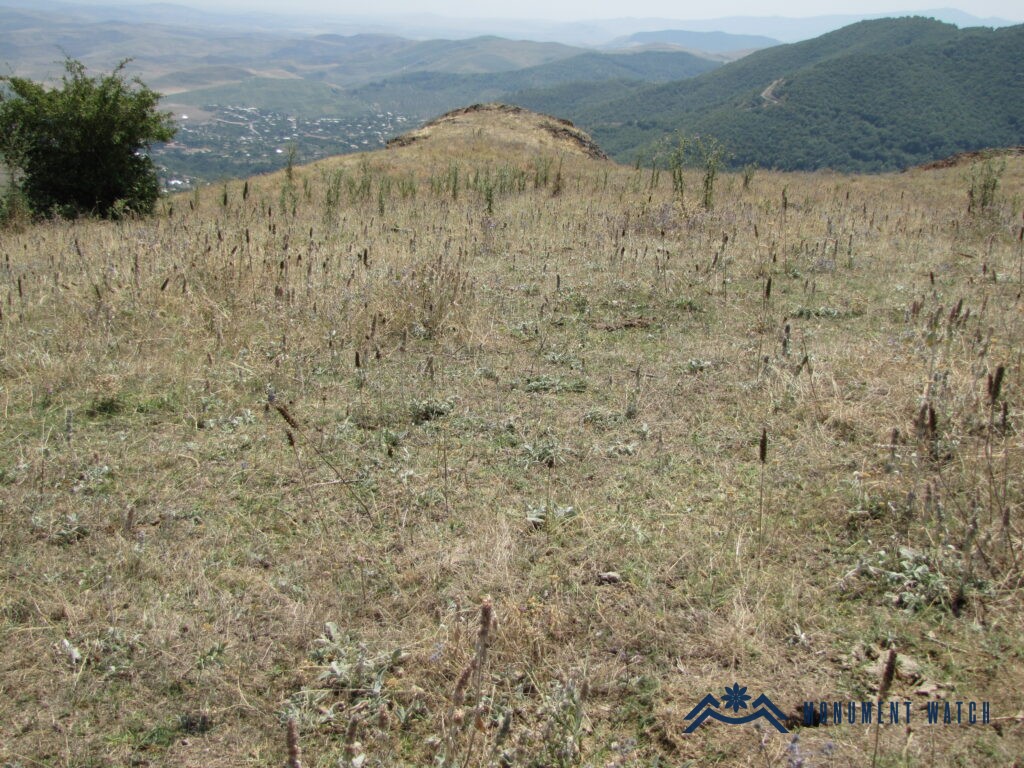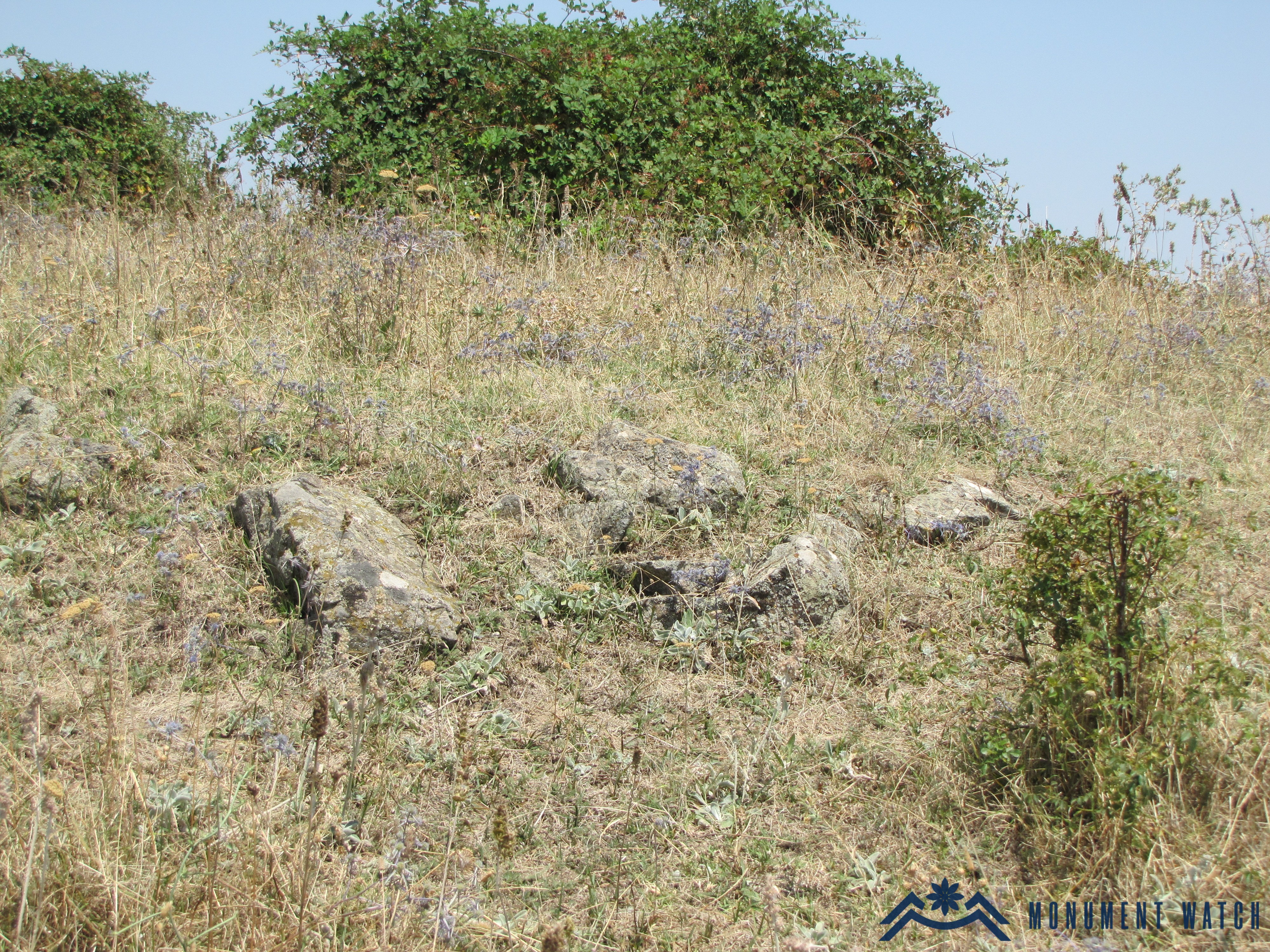The Ghlen (Ghalin) Khut fortress-settlement
Location
The monument is located between the villages of Gish, Mushkapat, and Chartar in the Martunu region of the Republic of Artsakh, on the edge of a high mountain. Azerbaijan has occupied it since 2023.
Historical overview
Unfortunately, the monument has not undergone a comprehensive study. Data have been individually reported by M. Barkhudaryants and E. Lalayan. Barkhudaryants provides the following description of the site:
"The fortress, known as Ghalin-Khut (Berdasar), is located between the villages of Kish, Mshkapat, and Kiuni-Chartar. Berdasar rises to a significant elevation (3735 feet), with steep, inaccessible ridges on its southern and western sides. At the same time, its eastern and northern flanks are fortified by a strong, pyramidal-free wall. Portions of this wall have now fallen into ruin. The interior surface of the fortress, currently cultivated, can hold approximately 14 bushels of seed. The southern section of the fort’s surface is level, while the northern portion inclines slightly toward Kish. This area contains a spring with excellent water, which once fed the reservoirs that supplied water in times of conflict. Numerous caves also exist within the fortress walls" (Barkhudaryants 1895, 136).
Lalayan provides further details, noting: “This is the name of the mountain rising between Kish, Mshkapat, and Kyuni-Chartar, reaching an elevation of 3735 feet. Its southern and western sides consist of formidable ridges, while a robust wall once stood on its eastern and northern sides, though without towers; only the wall’s foundations remain. At the foot of the northern wall, several pools and a fragrant spring can still be found” (Lalayan 1897, 52).
Sh. Mkrtchyan also contributes additional observations: “Traces of the thick stone walls of the ancient fortress remain, alongside remnants of secular buildings in various locations. The fortress has a circular design, with an abundance of glazed buildings, brick fragments, and unfinished pottery scattered around. It is likely that a pottery workshop operated here. Just below the fortress are ancient caves that were part of its defensive system, adding archaeological value to the site” (Mkrtchyan 1980, 119).
Architectural-compositional examination
The "Ghlen Khut" fortress-fortified site is recognized by the Tourism and Historical Environment Protection Department under the government of the Nagorno-Karabakh Republic as a monument dating back to the 4th-16th centuries (Fig. 1). Situated 3 kilometers north of Gish village, the site stands on the right bank of the Honashen River, atop a hill at an elevation of 554 meters above sea level (Certificate of Monuments of the Ministry of Education, Science, Culture and Sport of the Republic of Artsakh).
From an external perspective, the Fortress Keeper Hill appears to resemble a peninsula. The area in question spans 1,687 square meters, with dimensions of 45 x 37.5 meters. The fortress was previously enclosed by a perimeter wall, with visible traces or foundations in some locations (Figs. 2, 3, 4, 5, 6). The site also encompasses the ruins of other structures. Archaeological finds from the fortress and the adjacent ancient settlement include a variety of household items, ornaments, luxury objects, glazed bowls (Fig. 7), and decorated capitals characteristic of the early medieval period. These valuable artifacts serve as tangible evidence of the rich, yet unexplored, historical and cultural heritage of Gish village and its surrounding areas.
No written sources provide information on the construction date of Ghlen-Khut. However, preliminary research on the site suggests that this remarkable fortress-ancient site in the lower Honashen Valley dates to the 4th–16th centuries (Certificate of Monuments of the Ministry of Education, Science, Culture and Sport of the Republic of Artsakh). Noteworthy are the caves near Ghlen Khut, which were incorporated into defensive system of the fortress.
The Ghlen-Khut, with its fortified structures, served as a distinctive citadel for both the historic people of Gishi and the residents of nearby Spitakashen. The Ghlen-Khut fortress stronghold, along with its unique local features, displays similarities to fortress castles preserved in other provinces of Armenia. It represents a substantial defensive complex constructed in line with the classical principles guiding Armenian fortress architecture.
The condition before, during, and after the war
The current condition of the Ghlen-Khut fortress remains undocumented.
Bibliography
- Barkhutareants 1895 - Barkhutareants M., Artsakh, Baku.
- Lalaeants 1897 - Lalaeants E., Varanda, "Journal of Ethnology", book II, Tiflis.
- Mkrtchyan 1980 - Mkrtchyan Sh., Historical and architectural monuments of Nagorno Karabakh, Yerevan.
- Certificate of Monuments of the Ministry of Education, Science, Culture and Sport of the Republic of Artsakh- Certificate of Department of Monuments Protection and Study of Tourism Department.
The Ghlen (Ghalin) Khut fortress-settlement
Artsakh
